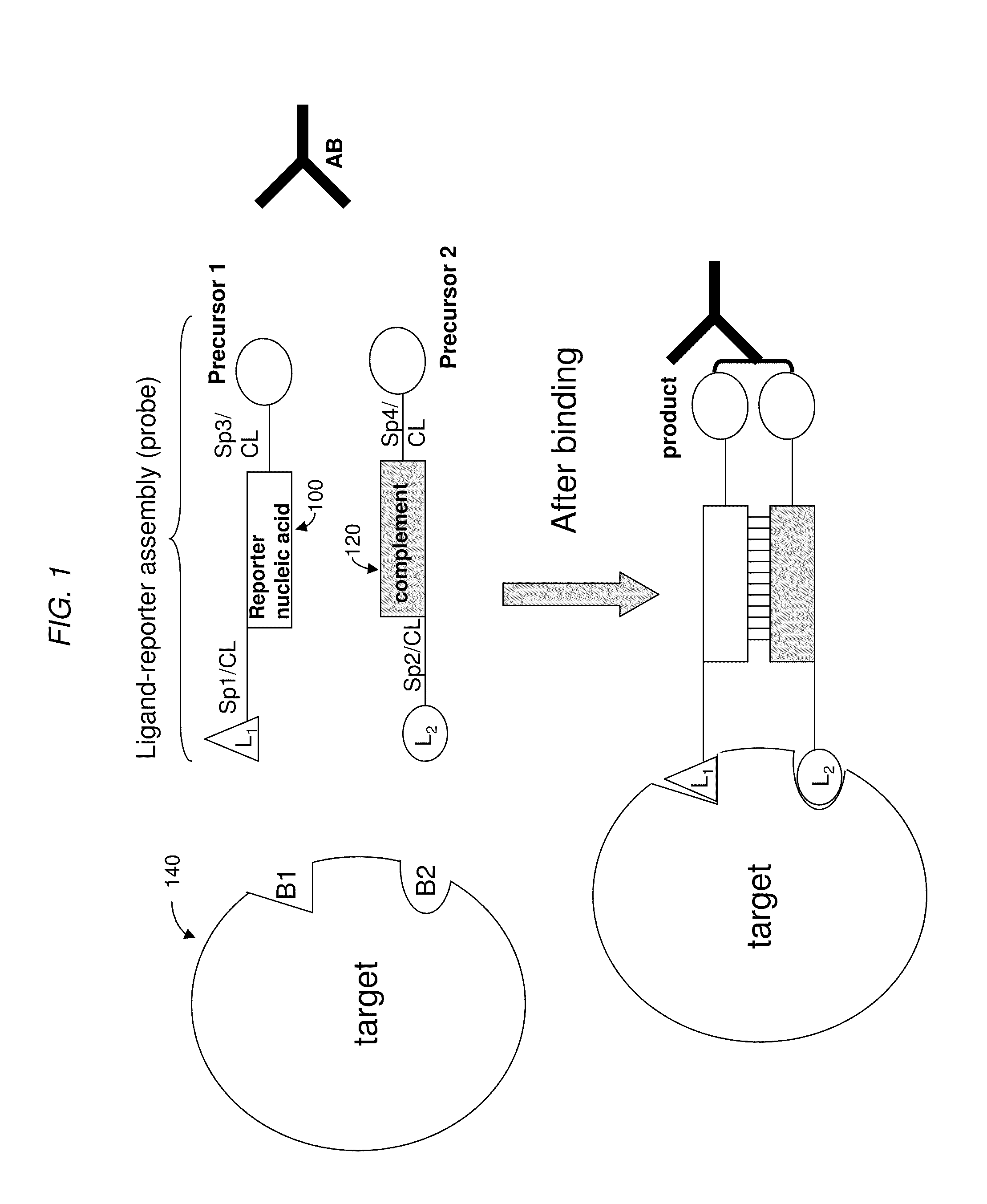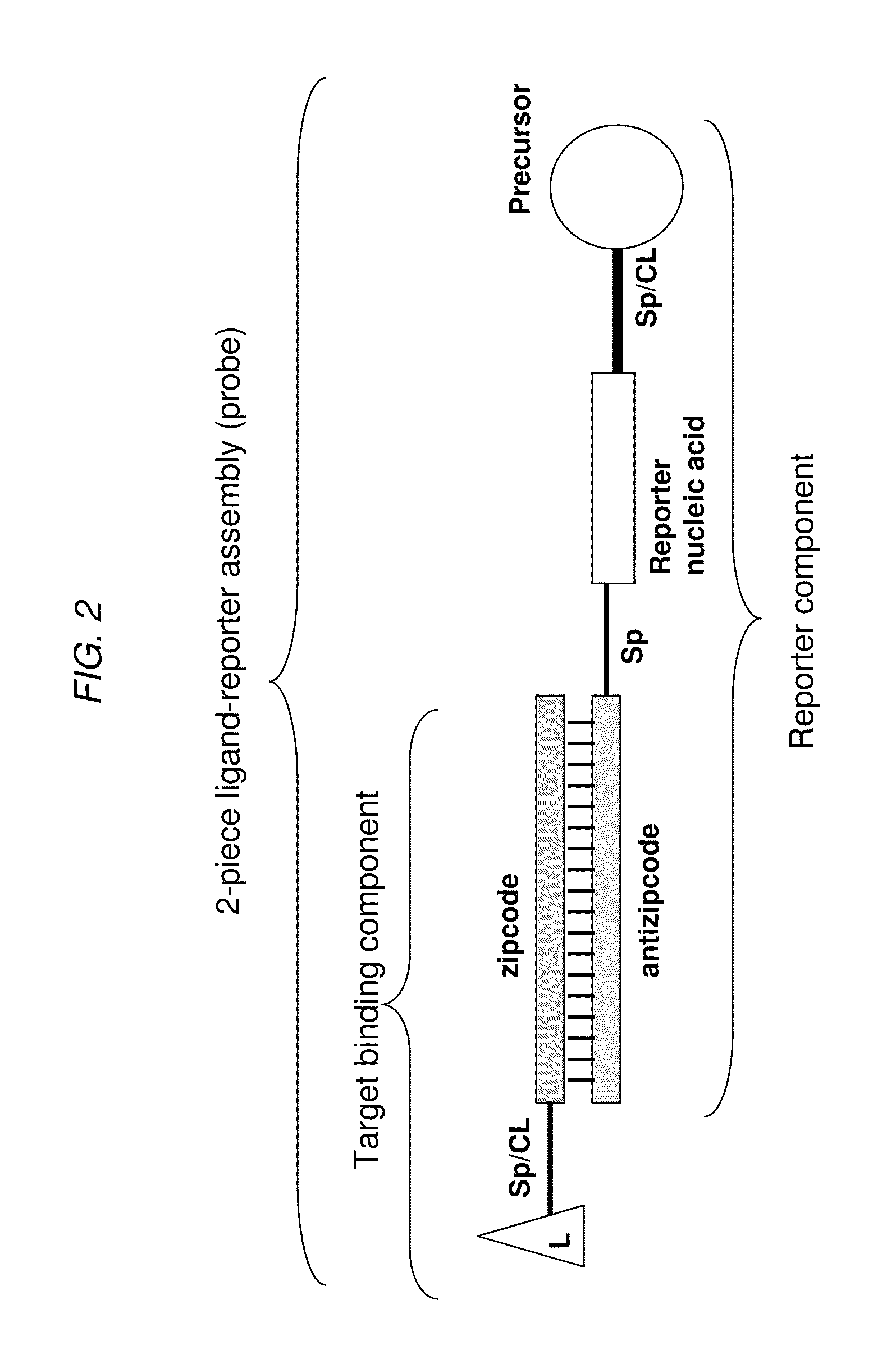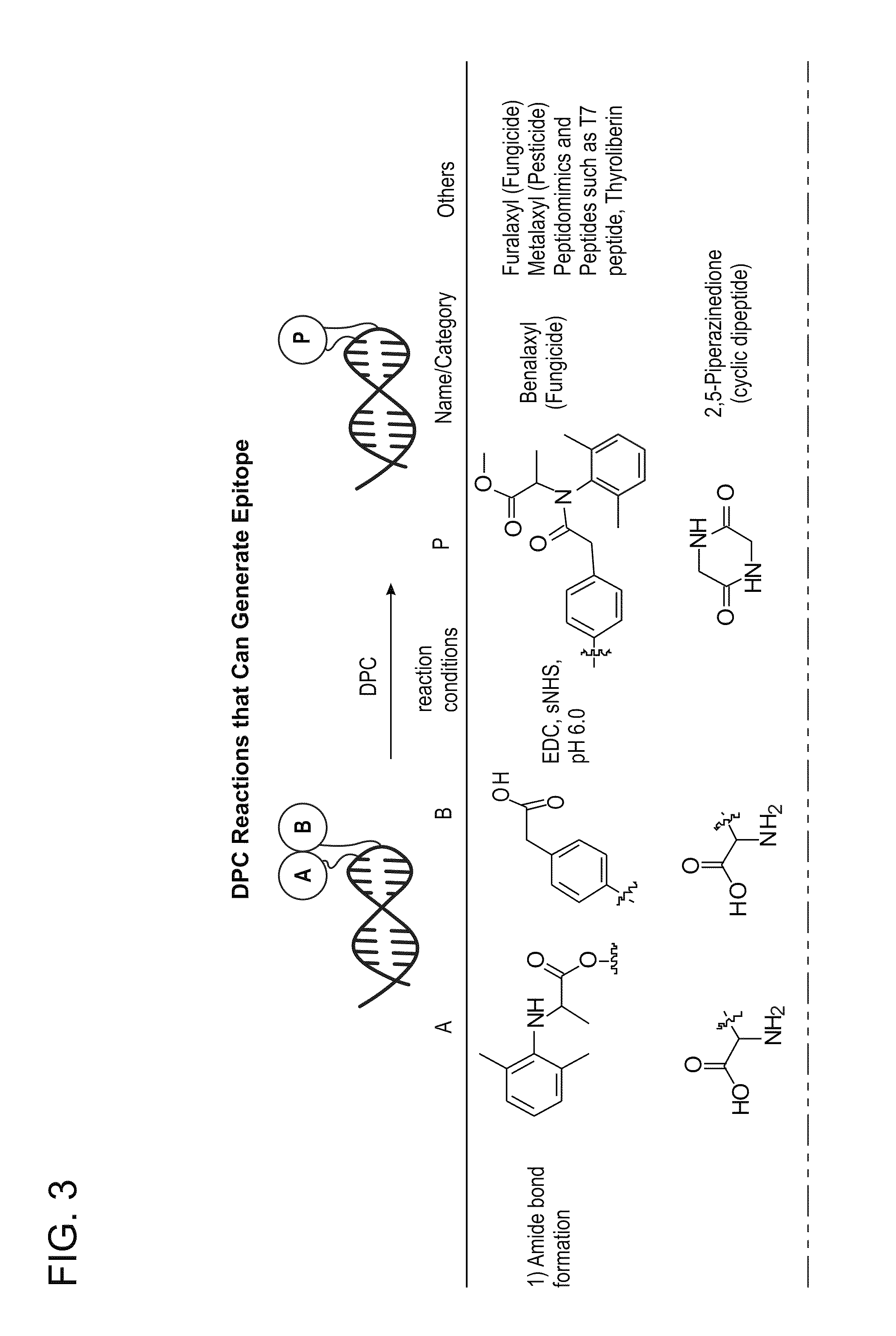Detection Assays and Use Thereof
a detection assay and detection technology, applied in the field of detection assays, can solve the problems that the production of a single detectable molecule cannot confer the system with adequate sensitivity to detect a biological target, and other assays may lack the requisite sensitivity, so as to improve the detection limits of dna-mediated assays and increase the sensitivity of a given assay
- Summary
- Abstract
- Description
- Claims
- Application Information
AI Technical Summary
Benefits of technology
Problems solved by technology
Method used
Image
Examples
example 1
Biotin Ligase Peptide—Unmasking of Biotinylation Site
[0134]Biotin ligase, in the presence of biotin and ATP, attaches a biotin molecule to a specific lysine residue present in a peptide sequence recognized by biotin ligase. The substrate for a biotin ligase, known as a biotin ligase peptide, which can be part of a larger sequence, can comprise the sequence LX1X2IX3X4X5X6KX7X8X9X10, wherein X1=any amino acid; X2=any amino acid except L, V, I, W, F, Y; X3=F, L; X4=E, D; X5=A, G, S, T; X6=Q, M; K=lysine; X7=I, M; X8=E, L, V, Y, I; X9=W, Y, V, F, L, I; and X10=preferably R, H but not D, E (Beckett, et al. (1999) A minimal Peptide Substrate in Biotin Holoenzyme Synthetase-catalyzed Biotinylation, Protein Science, 8, 921-929). Once the peptide is biotinylated, the presence of a biotin molecule can be detected using reporter molecules containing a binding moiety, such as avidin or streptavidin, which are commonly employed in the art.
[0135]A modified BLP containing an azido-modified lysine ...
example 2
Ligation of Peptide Fragments to Create an Enzyme Substrate
[0145]This example describes the detection of an operative enzyme substrate following its synthesis (ligation) from precursor fragments by DPC.
[0146]a) Biotin Ligase Peptide
[0147]The operability of this approach has been demonstrated using BLP. The minimum requirements for enzyme recognition of this peptide include a minimal length of 13 amino acids with specific amino acids specified at each site (see, the BLP sequence appearing in Example 1), including the requirement for a free primary amino group on the single lysine in the peptide. Fragments shorter than 13 residues usually are not recognized by biotin ligase.
[0148]As shown in FIG. 9, a DPC-based detection assay can be based upon two ligand reporter assemblies each containing a partial length fragment (precursor) of the biotin ligase peptide. The carboxyl terminal of the N-terminal fragment and the amino terminal of a C-terminal fragment can be linked together in the pr...
example 3
Ligation of Peptide Fragments to Create an Epitope
[0155]This example describes the detection of an epitope created by DPC from peptide precursor.
[0156]i) ELISA Assay to Detect Full-Length T7 Epitope Peptide by Monoclonal Anti-T7 Antibody
[0157]The T7 epitope peptide can be created by the ligation of hemipeptides, both of which are required to reconstitute an operative T7 epitope, e.g., an epitope specifically bound by an anti-T7 antibody. The resulting full length peptide contains no highly reactive amino or carboxyl side chains. Accordingly, the T7 hemi-peptides can be ligated with EDC without undesirable cross reactions with other free amino or carboxyl side chains of other amino acids in the peptide.
[0158]Two T7 hemi-peptides, an N-terminal hemipeptide and a C-terminal hemipeptide, were synthesized. The N-terminal amine of the N-terminal hemi-peptide and the C-terminal carboxyl of the C-terminal hemi-peptide were both synthesized as amides, leaving only one free amine and carboxyl...
PUM
| Property | Measurement | Unit |
|---|---|---|
| melting temperature | aaaaa | aaaaa |
| melting temperature | aaaaa | aaaaa |
| concentrations | aaaaa | aaaaa |
Abstract
Description
Claims
Application Information
 Login to View More
Login to View More - R&D
- Intellectual Property
- Life Sciences
- Materials
- Tech Scout
- Unparalleled Data Quality
- Higher Quality Content
- 60% Fewer Hallucinations
Browse by: Latest US Patents, China's latest patents, Technical Efficacy Thesaurus, Application Domain, Technology Topic, Popular Technical Reports.
© 2025 PatSnap. All rights reserved.Legal|Privacy policy|Modern Slavery Act Transparency Statement|Sitemap|About US| Contact US: help@patsnap.com



